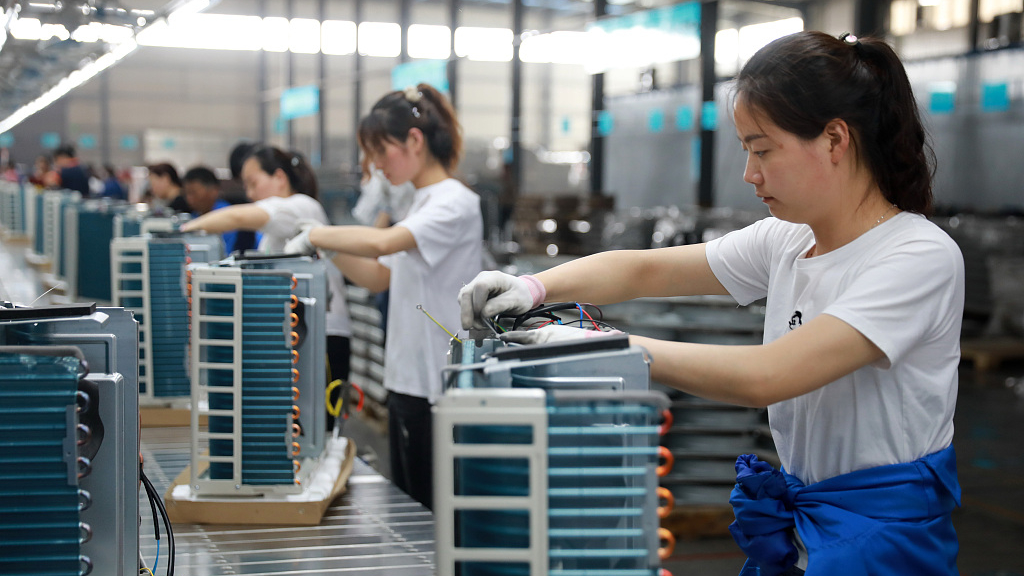
Workers assembling air conditioners at a factory in Huaibei City, Anhui Province, May 30, 2019. /VCG Photo
Workers assembling air conditioners at a factory in Huaibei City, Anhui Province, May 30, 2019. /VCG Photo
Editor's note: The following article is taken from the Chinese-language "Commentaries on International Affairs." The article reflects the author's opinions, and not necessarily the views of CGTN.
China on Sunday issued an outline of the next phase of the integrated development of the Yangtze River Delta over the next five to 15 years, sending out important signals of the country's determination to push ahead with all-round opening-up.
The Yangtze River Delta, which encompasses eastern China's provinces of Jiangsu, Zhejiang and Anhui as well as the Shanghai Municipality, is one of the country's most dynamic regions in terms of economic development, level of openness and innovation capability, generating about a quarter of China's GDP on less than four percent of the country's land area. The region's annual R&D expenditure and its number of valid patents make up about one-third of the nation's total.
Last year, the integrated development of the region was adopted as a national strategy. It is considered a key measure, together with a host of other plans, including the Coordinated Development for the Beijing-Tianjin-Hebei region, the Belt and Road Initiative, and the Guangdong-Hong Kong-Macao Greater Bay Area, taken by China to deepen reform and further open up its market.
According to the outline, the Yangtze River Delta region will further open its manufacturing, service, and agricultural sectors, and gradually lower the market thresholds for such industries as automotive, shipbuilding, and electronic information. The region is also tasked with jointly developing global innovation chains and the industrial chain with global top 500 companies and industry leaders.
It will accelerate the opening of its financial sector, gradually relaxing market access for foreign players in the banking industry and offering support to foreign institutions that intend to issue RMB-denominated bonds overseas and invest directly in China's domestic bonds. By setting up these targets, the region is expected to become an important pilot zone to introduce new policies.
The Yangtze River Delta, as China's most economically vibrant area with the most abundant capital supply, will also play a leading role in refining China's overseas investment as it's required to reinforce international cooperation in such areas as production capacity, petroleum, gas, and mineral development as well as advanced manufacturing, financial services and overseas mergers and acquisitions.
In addition, the region is hopefully to become a role model in providing a first-class business environment as the plan outlines such development goals as comprehensively aligning its market rules with international standards, further increasing penalties for intellectual property infringement and creating a stable, fair, transparent and predictable market environment.
The region's goals to provide more convenient border clearance services, more job opportunities for international students and more permanent residency for expats as well as the aim to upgrade its education, medical care and cultural services will help build up its talent pool.
As a key driver of the Chinese economy, the Yangtze River Delta region will provide more power for the country's development over the next 15 years, and is on the verge of bringing more business opportunities to the rest of the world.
(If you want to contribute and have specific expertise, please contact us at opinions@cgtn.com)